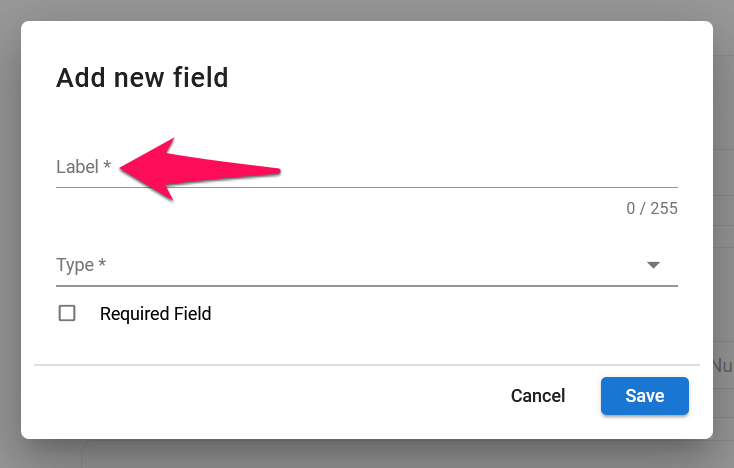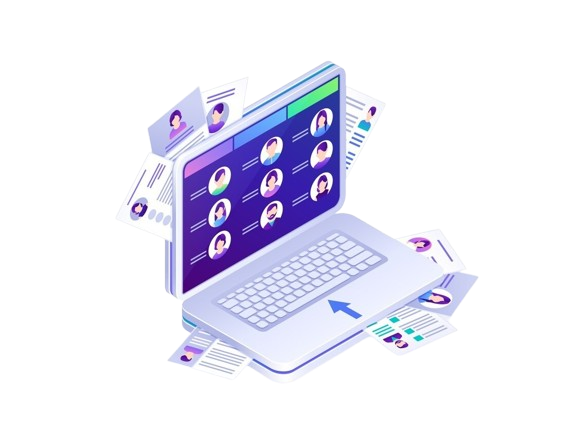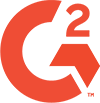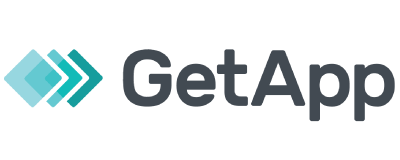Recruitment can feel like an uphill battle in today's fast-paced job market. HR teams spend countless hours sorting resumes, scheduling interviews, and chasing candidates, draining time and resources. Recruitment automation offers a more innovative way forward, using technology to save time, reduce manual work, and improve the candidate experience. This guide unveils 10 practical methods to automate your hiring process, helping you attract top talent efficiently and effectively.
10 Recruitment Automation Tools and Strategies
Here are 10 strategies to integrate recruitment automation into your workflow which can help you better manage your processes, improve candidate experience, optimize the recruitment process, save time and resources, and ultimately, boost the quality of hires.
Candidate Screening Automation
1. Pre-Screening
Problem: Manually reviewing applications where candidates don't meet basic requirements wastes precious hours of your day.
Solution: Add yes/no pre-screening questions to your online application form to automatically filter out ineligible candidates before they enter your pipeline. For example, “Are you authorized to work in [Country]?” Tools like Manatal support this via customizable form fields that automate early-stage filtering.

2. Pre-Screening Ranking
Problem: Not all qualifications carry equal importance, but basic filtering treats them similarly.
Solution: Use a weighted scoring system in your Applicant Tracking System (ATS) to prioritize key qualifications. For example, scoring candidates by experience level or required certifications. Platforms like Manatal or Typeform allow automated scoring and ranking based on your criteria (shown below).
{{cta}}
.png)
3. Multilingual Resume Parsing with AI
Problem: Global hiring requires reviewing resumes in multiple languages, creating bottlenecks if your team isn't multilingual.
Solution: Use automated resume parsing that extracts structured data from resumes in multiple languages, reducing manual entry and helping you scale global hiring more easily. Manatal’s AI-powered resume parsing allows you to accurately parse resumes in the most widely used languages and sorts all your candidate information neatly in your candidate database.
Communication and Scheduling Automation
4. Candidate-Led Interview Scheduling
Problem: The process of scheduling interviews often causes delays, and this back-and-forth can lead to frustration among candidates.
Solution: Implement candidate-led scheduling systems that automatically send customized interview preparation materials. By linking tools like Calendly with your ATS, candidates can select interview times that work for both parties. The system then automatically sends role-specific prep materials, reducing scheduling time from days to minutes.
.png)
5. Automated Communication
Problem: Generic mass emails feel impersonal and don't address candidates' specific stage in the hiring process.
Solution: Automate candidate emails across hiring stages using workflows. Schedule personalized updates, confirmations, and nudges triggered by application progress. Workflow tools in ATS platforms like Manatal handle this seamlessly, set up actions such as sending emails or notifications when candidates meet certain criteria of your choosing, such as completing a form.
.png)
6. Automated Rejection Notifications
Problem: Not responding to rejected candidates can significantly harm your employer brand by creating a negative perception of your company as insensitive or disorganized. This lack of acknowledgment can lead to disgruntled candidates sharing their negative experiences on social media platforms, review sites, or within their professional networks, which can deter potential future candidates from applying. However, sending rejection notices manually requires a significant amount of time.
Solution: Craft personalized rejection emails that dispatch automatically at appropriate points in your workflow. This maintains your reputation for respectful communication while saving your team from writing individual messages to every unsuccessful applicant. For instance, Alooba’s Automated Candidate Rejection allows users to efficiently manage their candidates and improve the candidate experience. The tool automatically rejects candidates who do not meet specific requirements after user has set their qualifying criteria and score thresholds.
Global and Diverse Hiring Automation
7. Automated Translations
Problem: Language barriers limit your talent pool and create inconsistencies in how candidates understand your requirements.
Solutions
- Amazon Translate: https://aws.amazon.com/translate/
- DeepL Translator: https://www.deepl.com/en/translator
Verification and Onboarding Automation
8. Due Diligence Checks
Problem: Manual background checks can delay hiring decisions due to their labor-intensive nature, which involves gathering information from various sources. This process is prone to human error and communication delays, resulting in slower recruitment and possibly causing organizations to lose top talent.
Solution: Automate compliance and background checks with verification tools that trigger at specific stages. Platforms like Checkr handle this without manual follow-up.
9. Automated Reference Checks
Problem: Candidate reference checks are often unreliable because candidates select references likely to speak positively about them. Moreover, the process of obtaining references during hiring can be delayed due to challenges in gathering contact information, references' busy schedules, and the time needed for coordination, potentially impacting the company's efficiency and causing missed opportunities to hire top talent.
Solutions:
- Harver - https://harver.com/software/reference-checking/
- VidCruiter - https://vidcruiter.com/reference-check/software/
- Xref - https://www.xref.com/solutions/reference-checking
- Spark Hire - https://www.sparkhire.com/reference-check-software/
10. Onboarding Automation
Problem: Generic onboarding processes overwhelm new hires with irrelevant information while missing critical role-specific details.
Solutions:
- Workato: https://www.workato.com/editions/hr
- Talmundo: https://talentech.com/products/onboarding-software/
- HR Cloud: https://www.hrcloud.com/employee-onboarding-software
Benefits of Recruitment Automation
The payoff of recruitment automation is clear and compelling:
- Improved Hiring Speed: According to Forbes, automation can reduce time-to-hire by up to 50%, letting you snag top talent first.
- Higher Quality Hires: Precision screening focuses on candidates who align with your goals, improving retention.
- Data-Driven Decisions: Analytics shift hiring from gut instinct to evidence, optimizing every step.
Essential Implementation & Best Practices
Ready to automate? Here’s how to do it right:
- ROI & Metrics: Measure success with KPIs like time savings (hours reduced per hire), cost cuts (dollars saved), and quality gains (retention rates). Use these to justify investment.
- Implementation Tips:
- Start small—test one tool, like email automation, before scaling.
- Pick integrable platforms—ensure your ATS syncs with HR systems.
- Train staff—offer hands-on sessions to build confidence.
- Balance automation with a human touch—use tech for tasks, not relationships.
Conclusion
Recruitment automation is crucial in today's talent marketplace. Implementing these 10 automation approaches can greatly enhance hiring outcomes and improve the experience for both candidates and recruitment teams. Successful implementations balance technology and human interaction. They use technology to reduce administrative tasks and enhance human elements. As competition for top talent increases, mastering this balance is vital. Organizations that do so will excel in attracting and retaining the best individuals. Start with one or two ideas, experiment with tools like Manatal*,* and watch your process evolve.
Frequently Asked Questions
Q: Will automation make my hiring process less personal?
A: Automation in hiring can impact its nature, depending on implementation. Automation can streamline tasks such as resume screening, interview scheduling, and candidate communication. This allows human resources to prioritize personal interactions when necessary. Conversely, poorly designed automation may create an impersonal experience for candidates. They might feel they are dealing with impersonal systems rather than human beings. To maintain a personal touch, efficiency must be balanced with empathy. Automation should manage routine tasks, preserving human interaction at critical points like interviews and feedback sessions. By doing this, organizations can utilize technology while maintaining a positive candidate experience.
Q: What is the difference between automation and AI?
A: Automation and AI both focus on enhancing efficiency and productivity. However, they differ fundamentally in their methods and capabilities. Automation employs technology to carry out repetitive tasks without human intervention. It relies on predefined rules or instructions. This approach streamlines operations, speeds up processes, and ensures consistency. Common applications include data entry and assembly line production.
In contrast, artificial intelligence (AI) covers a broader range. It enables machines to simulate human intelligence. AI performs complex tasks requiring decision-making, learning, and adaptation. These systems can analyze large datasets and recognize patterns. They can also predict outcomes. This capability allows AI to handle advanced tasks like natural language processing and image recognition.
Automation is often limited to specific tasks. Conversely, AI has the ability to learn and evolve. This enables it to manage a wider array of tasks. AI can adapt to new situations over time.
Q: How much does it typically cost to implement recruitment automation?
A: The cost of implementing recruitment automation varies widely. Several factors influence this, such as organization size, recruitment process complexity, and chosen technology solutions. Smaller companies might initially spend a few thousand to tens of thousands of dollars. In contrast, larger enterprises may invest significantly more, potentially reaching six figures for comprehensive systems. Beyond upfront expenses, organizations must consider ongoing costs. These include software subscription fees, maintenance, training, and potential customization. To maximize return on investment, selecting a solution that closely aligns with hiring needs and integrates seamlessly with existing systems is crucial.
Q: What role does AI play in recruitment automation?
A: AI is revolutionizing how companies find talent by making hiring smarter and faster. Smart systems now sift through mountains of resumes to spot the perfect candidates, looking beyond keywords to understand skills and potential team fit. These tools help recruiters overcome human biases by focusing on qualifications rather than names or backgrounds. When candidates interact with companies, they might chat with an AI assistant who answers questions and schedules interviews without human delay. During video interviews, AI can even notice subtle expressions and speaking patterns that human recruiters might miss. Behind the scenes, these systems are constantly learning from successful hires and getting better at predicting who will thrive in specific roles. For busy HR teams, this technology means spending less time on paperwork and more time connecting with promising candidates, ultimately bringing better people into organizations more quickly than ever before.
Q: How do automated recruitment systems ensure the security and privacy of candidate data?
A: Automated recruitment systems implement multiple security layers to protect candidate data. These include encryption for data in transit and at rest, and access controls to limit who can view sensitive information. Regular security audits are conducted, and compliance with data protection regulations such as GDPR and CCPA is maintained. Data retention policies automatically delete information after a set period. Secure authentication methods, like two-factor authentication, are required. Dedicated servers with firewalls and intrusion detection systems are used. Many platforms conduct penetration testing to identify vulnerabilities. Detailed audit logs of all system access are maintained. Secure API integrations are ensured when sharing data with third-party services. Candidates are informed about how their information is used and stored.





.png)






















.webp)

.webp)

.webp)
